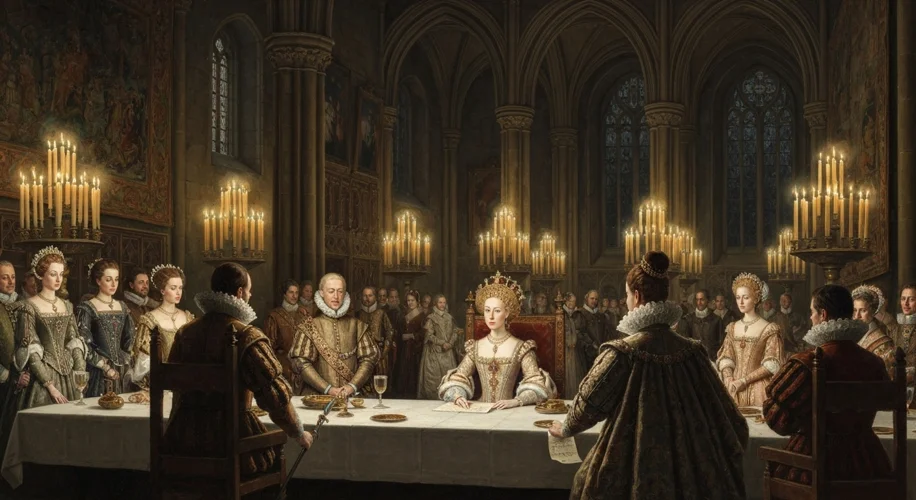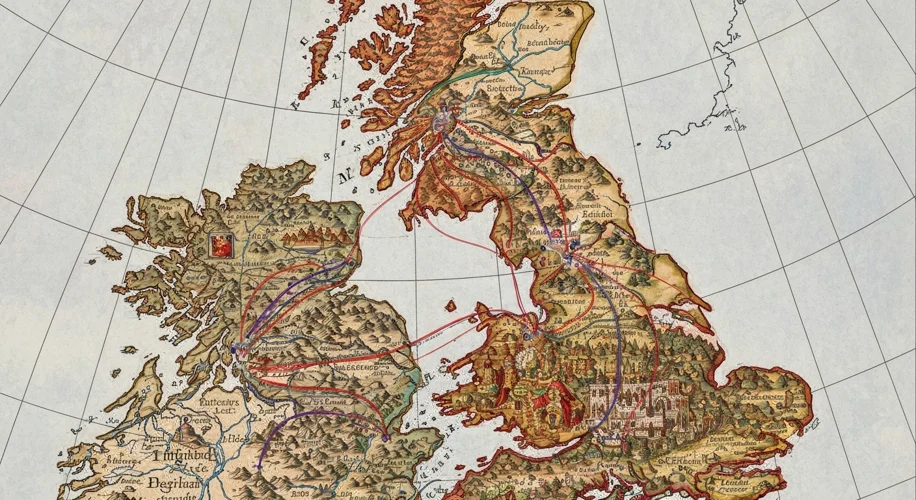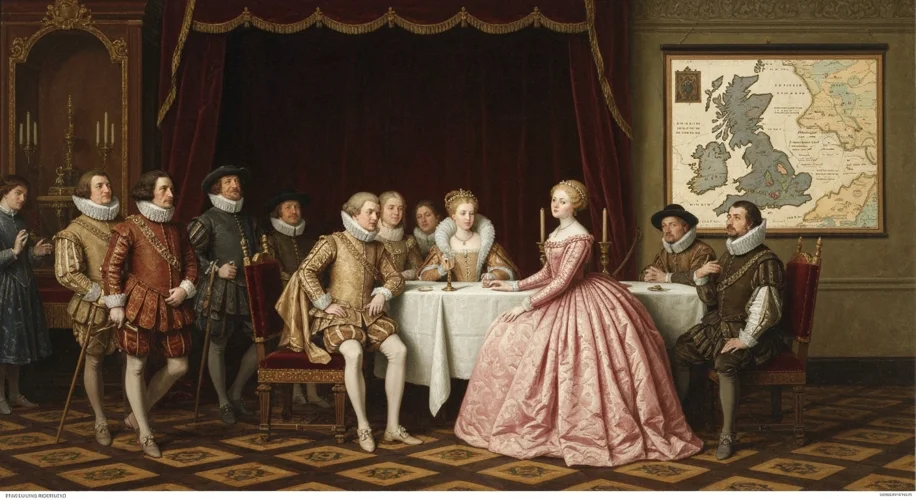In the intricate tapestry of 16th-century European politics, royal marriages were not merely affairs of the heart but calculated maneuvers on a global chessboard. For England and Scotland, two nations bound by a complex history and a shared border, the marital prospects of their respective queens, Elizabeth I and Mary, Queen of Scots, were subjects of intense scrutiny and strategic importance. The potential unions of these powerful women with foreign dukes and kings would have rippled through the continent, shaping alliances, dictating dowries, and potentially altering the very map of Europe.
Elizabeth I, the Virgin Queen, navigated a treacherous path in her quest to secure England’s future. Her court buzzed with discussions of potential suitors, each bringing with them a unique set of political advantages and disadvantages. The Archduke Charles of Austria, a Catholic prince, offered a potential bridge to the powerful Habsburg dynasty, but his faith was a significant hurdle for the Protestant English establishment. Then there was Robert Dudley, Elizabeth’s childhood friend and a Protestant Englishman, whose elevation would have pleased many of her loyal subjects but was viewed with suspicion by foreign powers and would have excluded any advantageous foreign alliance. Each proposal was weighed not just on personal compatibility but on the logistical, political, and even personal ramifications of such a union.

Across the border, Mary, Queen of Scots, a Catholic claimant to the English throne, also found her marital life intricately woven into the political fabric of the era. Her first marriage to Francis II of France brought Scotland under French influence, a move deeply unsettling to many in England. Following Francis’s untimely death, Mary’s subsequent marriage to Lord Darnley, and later the Earl of Bothwell, proved disastrous, contributing to her abdication and imprisonment. These unions highlighted the immense pressure on female monarchs to produce heirs, often at the expense of personal happiness and political stability.
Consider the logistics of such a union. A royal marriage meant not just the union of two individuals but the potential merging of kingdoms. How would cohabitation function when two monarchs, each accustomed to their own court and their own authority, were expected to share a throne or a kingdom? The question of dowry kingdoms was paramount. Would the queen’s lands be absorbed entirely, or would they retain a degree of autonomy? The fate of a dowry kingdom was often tied to the continuation of the royal line; without an heir, the territories could revert to the queen’s original kingdom, leading to further instability and conflict.
For Elizabeth, a marriage to a foreign prince, say, a Spanish infante or a French royal, would have been a complex affair. England, still recovering from the religious turmoil of her father Henry VIII’s reign, was wary of foreign entanglements, particularly those that might bring Catholicism back to the forefront. The logistics of accommodating a foreign king and his retinue, the potential for his influence to overshadow Elizabeth’s own authority, and the impact on English law and customs were all critical considerations. Furthermore, the religious differences, if any, would have been a constant source of tension, potentially igniting widespread dissent among her Protestant subjects.
For Mary, the situation was equally fraught. Her brief marriage to Francis II of France meant she was effectively queen consort of France while also being Queen of Scots. The young Francis, often frail, was heavily influenced by his mother, Catherine de’ Medici. Had they produced an heir, Scotland might have become a mere appendage of France, a scenario Elizabeth I and many Scottish nobles would have desperately sought to avoid. The potential for a marriage to Philip II of Spain, a powerful Catholic monarch, was another possibility, offering a powerful Catholic alliance against Protestant Europe, but also potentially drawing Scotland into Habsburg conflicts.

The personal toll of these potential marriages cannot be overstated. Queens were often expected to be conduits for dynastic succession, their value measured by their fertility. Elizabeth, keenly aware of this expectation, famously declared herself married to England. Mary, less fortunate in her choices and surrounded by ambitious lords and foreign powers, found her personal life a constant source of political intrigue and ultimately, tragedy. The emotional and psychological burden of ruling while navigating the complex demands of royal matrimony, often with men who sought not love but power and territory, must have been immense.
Ultimately, the speculative unions of Elizabeth I and Mary, Queen of Scots, with foreign powers serve as a compelling case study in the high-stakes diplomacy of the 16th century. These were not mere romantic entanglements but critical junctures where the fate of nations hung in the balance. The careful, and sometimes desperate, calculations surrounding royal marriages reveal a world where personal lives were inextricably linked to the grand designs of statecraft, a world where a queen’s hand in marriage could be as powerful, and as dangerous, as any army.

